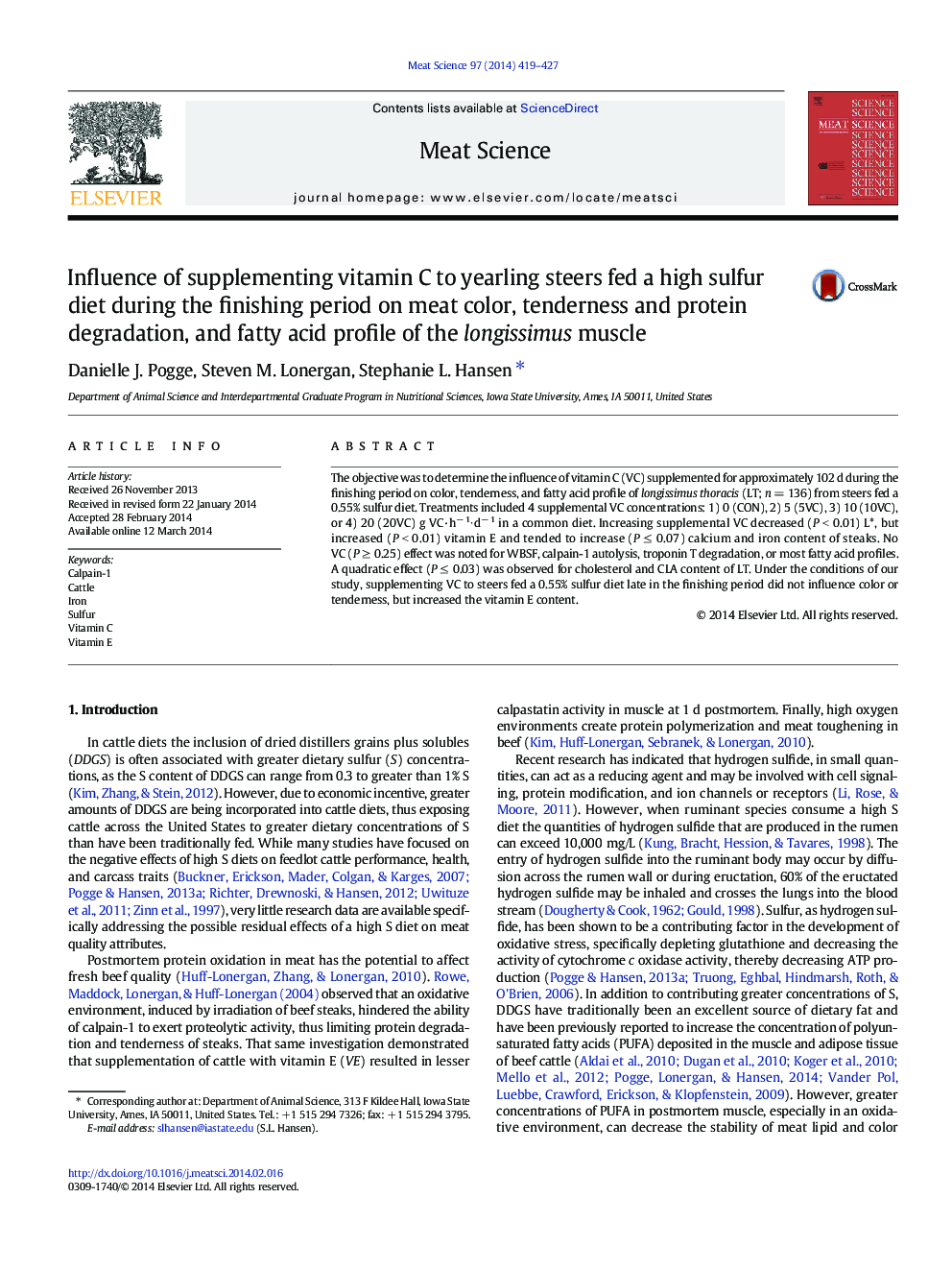| Article ID | Journal | Published Year | Pages | File Type |
|---|---|---|---|---|
| 5791638 | Meat Science | 2014 | 9 Pages |
â¢Increasing supplemental vitamin C in beef cattle diets increased vitamin E content in steaks.â¢Vitamin C supplementation tended to increase calcium and iron content of steaks.â¢Cattle fed vitamin C had lighter (lesser L*) colored steaks.â¢Vitamin C had minimal impacts on fatty acid profile of steaks.
The objective was to determine the influence of vitamin C (VC) supplemented for approximately 102 d during the finishing period on color, tenderness, and fatty acid profile of longissimus thoracis (LT; n = 136) from steers fed a 0.55% sulfur diet. Treatments included 4 supplemental VC concentrations: 1) 0 (CON), 2) 5 (5VC), 3) 10 (10VC), or 4) 20 (20VC) g VC·hâ 1â dâ 1 in a common diet. Increasing supplemental VC decreased (P < 0.01) L*, but increased (P < 0.01) vitamin E and tended to increase (P â¤Â 0.07) calcium and iron content of steaks. No VC (P â¥Â 0.25) effect was noted for WBSF, calpain-1 autolysis, troponin T degradation, or most fatty acid profiles. A quadratic effect (P â¤Â 0.03) was observed for cholesterol and CLA content of LT. Under the conditions of our study, supplementing VC to steers fed a 0.55% sulfur diet late in the finishing period did not influence color or tenderness, but increased the vitamin E content.
